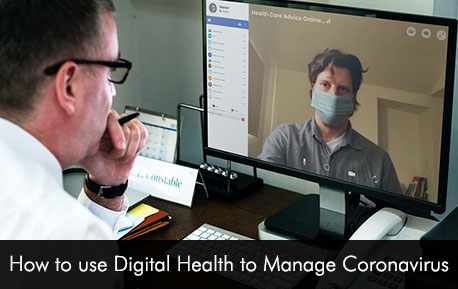Digital health is seen as the safest alternative to receiving effective and prompt care during the COVID-19 pandemic. Digital health tools are playing a major role to manage COVID-19 to improve health and extend care remotely.
Digital health tools are being used for effective communication, patient monitoring, and surveillance. The digital tools support the collection of and transfer information related to COVID-19 through existing tools or new tools specifically developed for this purpose. Mobile apps have been designed as a platform to communicate with the public and provide all necessary information and latest updates about the virus. These apps also help the public to connect with health services.
The Centers for Disease Control and Prevention has acknowledged that technology and digital health tools play a crucial part in supporting countries in times of a pandemic like this.
Evolution of Healthcare
Here are some ways countries are using technology and digital health tools to limit the spread, flatten the curve, and treat patients promptly. The adaption of digital health reflects that healthcare systems have evolved and will continue to transform even after the pandemic.
- Tracking of the COVID-19 virus – Digital health tools can be used to alert healthcare systems about the early potential signs of the virus. Kinsa Health, a company that has provided smart thermometers to people at home so they can record their fever. Through the smart thermometer, users can promptly report their fever and symptoms. The readings from the thermometer signal the early signs of potential viruses. The data can be used by healthcare authorities to plan the allocation of resources. The data can then be shared through online interactive maps that display individuals who are showing symptoms via zip code.
- Telemedicine to Counter the Issue of Capacity – Many outpatient facilities and services were closed due to safety concerns and hospitals having no space to accommodate more patients. People and healthcare providers turned to online consultations and video sessions to extend care remotely. Through the telemedicine platform clinicians are able to diagnose and treat patients without having to worry about the spread of the virus. During the outbreak, telemedicine services were also used to provide mental health support.
- Monitoring Patients and Hospital Visitors – In many hospitals, in the United States, Artificial Intelligence or AI have been implemented to help health care providers screen hospital visitors and treat infected patients. In Florida, The Tampa General Hospital is using AI to screen visitors with a camera embedded facial scanners. Through Artificial Intelligence hospitals are able to monitor and reduce the spread of the virus.
- Remote Patient Monitoring – AI technologies help support health care providers to monitor patients remotely which helps to keep the medical staff and nurses safe. For example, sensor technology can be placed under the patient’s mattress which helps to analyze heart rate and body movement. Remote patient monitoring has helped to improve the ongoing care process and the overall quality of healthcare.
Final Takeaway
2020 has been the year in which health care systems all over the world were pushed to use digital health tools to navigate and manage the virus. This pandemic has certainly reshaped the healthcare ecosystem and this change will sustain because of its many potential benefits and support to both health care providers and the patients.







